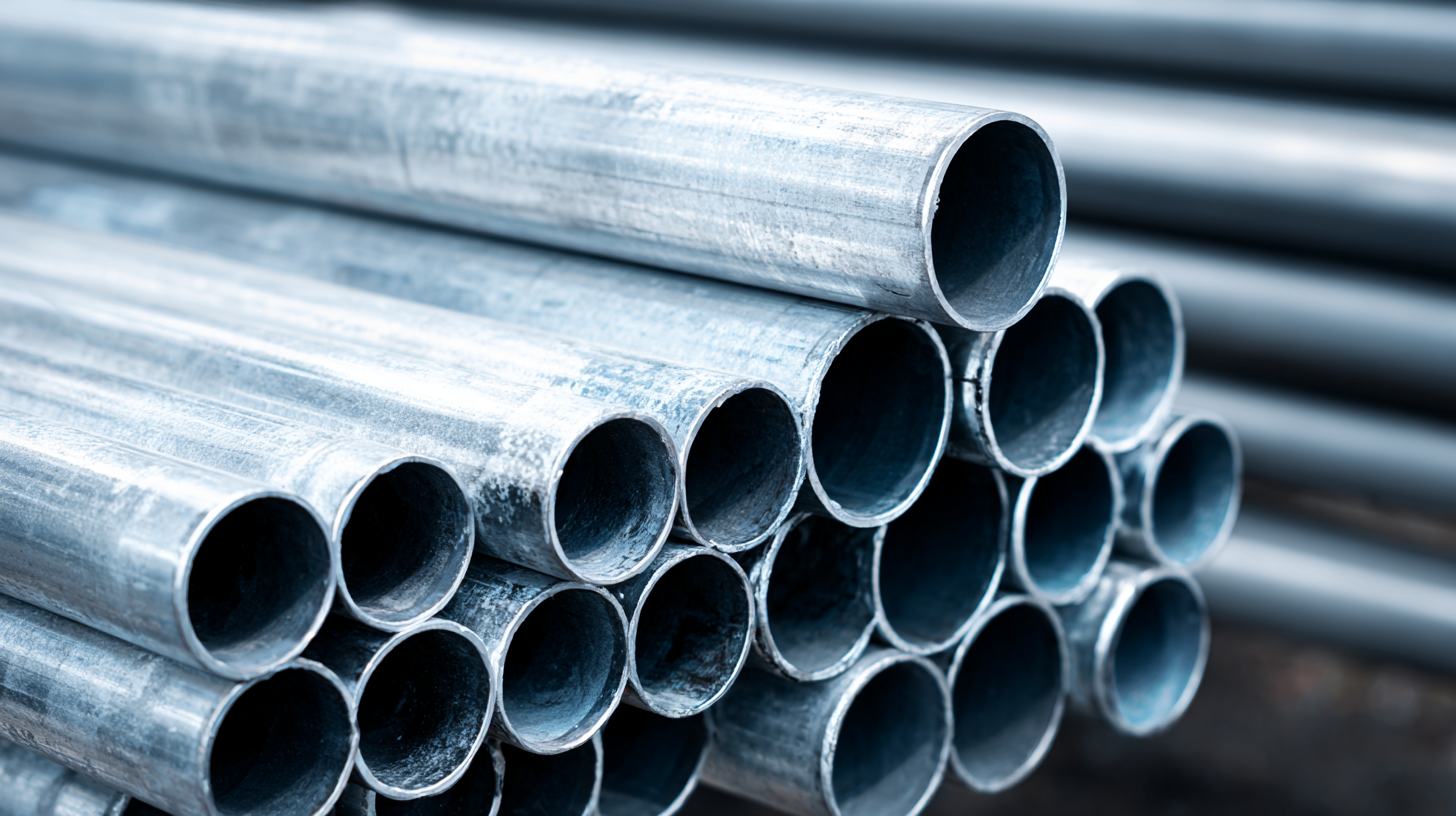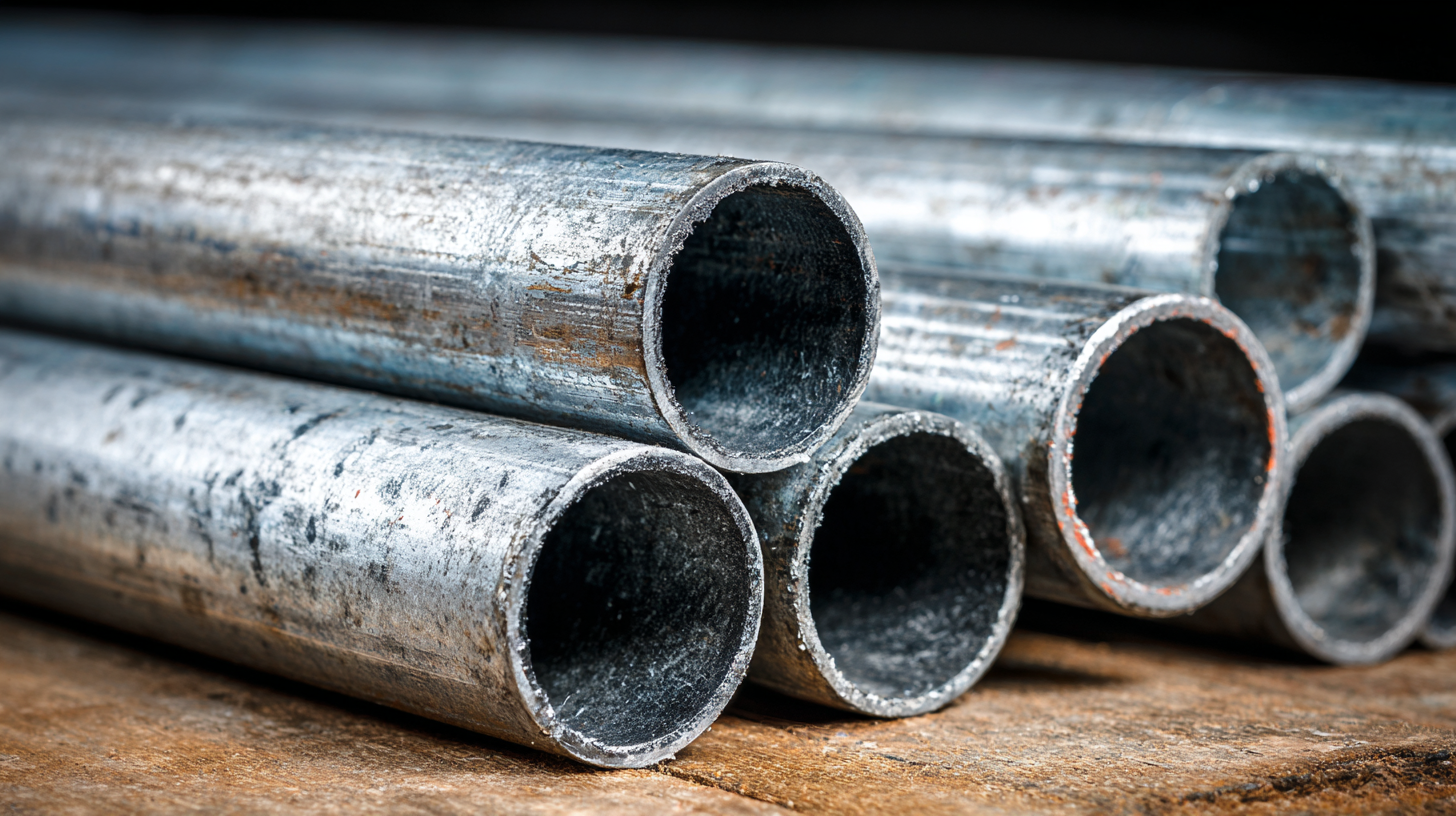Leave Your Message
-
Phone
-
E-mail
-
Whatsapp
The demand for galvanized tubes has seen significant growth in recent years, driven by the increasing application of these materials across various sectors, including construction, automotive, and manufacturing. According to a report by Grand View Research, the galvanized steel market is projected to reach $264.29 billion by 2025, with galvanized tubes playing a pivotal role in this expansion due to their corrosion-resistant properties and durability.

In addition, technological advancements in the production processes of galvanized tubes are enhancing their reliability, leading to higher adoption rates. As industries aim for sustainability and cost-effectiveness, understanding the essential features and specifications of galvanized tubes becomes increasingly critical.
This blog will delve into the ten vital characteristics that define the best galvanized tube specifications, ensuring that businesses can make informed decisions in their procurement and applications.
Galvanized tubes have become vital components in various industries due to their durability and corrosion resistance. Understanding the key specifications of these tubes is essential for ensuring optimal performance in applications such as construction, manufacturing, and infrastructure. The hot-dip galvanization process creates a protective layer of zinc, which significantly enhances the tubes' lifespan, making them an excellent choice for outdoor and adverse environment uses. According to a recent industry report, the global market for galvanized steel tubes is projected to grow at a CAGR of 4.5% over the next five years, underscoring the increasing demand for reliable materials.
When selecting galvanized tubes, several essential features should be considered. These include wall thickness, yield strength, and zinc coating weight. The wall thickness directly influences the tube's load-bearing capacity, while higher yield strength enhances structural resilience under stress. Additionally, a thicker zinc coating can provide better corrosion protection, especially in harsher environments. As manufacturers aim to meet the rising demands, recent initiatives in the steel industry, such as new investments and production enhancements, signify a strong push towards improving the quality and performance of galvanized products. Understanding these specifications can help industries make informed decisions, leading to enhanced safety and longevity in their projects.
| Feature | Description | Importance |
|---|---|---|
| Material Type | High-quality steel with zinc coating | Enhances corrosion resistance |
| Thickness | Typically ranges from 0.5mm to 2.0mm | Determines strength and durability |
| Dimensions | Common diameters range from 1/2" to 12" | Vital for fitting and structural integrity |
| Coating Method | Hot-dipped galvanization preferred | Provides a thicker, more durable coating |
| Weight | Weight varies based on size and thickness | Important for transport and feasibility of use |
| Mechanical Properties | Tensile strength and yield strength values | Critical for construction and engineering applications |
| Weldability | Can be welded; specific techniques recommended | Essential for fabrication processes |
| Finish Type | Smooth or rough finishes available | Affects aesthetic and friction properties |
| Standards Compliance | Must meet ASTM, ISO, or other standards | Ensures reliability and safety |
When considering the quality of galvanized tubes, several essential features should be prioritized to ensure durability and reliability in various applications. First and foremost, the thickness of the zinc coating is crucial. A thicker layer not only enhances corrosion resistance but also prolongs the tube's lifespan. It's important to look for compliance with industry standards, as this guarantees that the tubes will perform well under different environmental conditions.
Another key feature is the tube's strength and structural integrity. Opt for tubes manufactured from high-grade steel, as these are less likely to bend or deform under stress. Inspecting the welding quality can also provide insight into the overall robustness of the product.
**Tips:** When selecting galvanized tubes, always request samples to check for any surface imperfections, as these can indicate potential weaknesses. Additionally, don’t ignore the manufacturer's reputation; a reliable source will offer certifications and warranties that reassure the quality of their products. Lastly, consider the tube's adaptability for your specific project needs—factors such as size, shape, and weight can significantly impact your overall results.

When considering galvanized tubes for various applications, compliance with industry standards is critical to ensure quality and safety. These standards, which vary by region and application, outline specific requirements for materials, dimensions, and performance characteristics. The most commonly referenced standards include those set by the American Society for Testing and Materials (ASTM) and the International Organization for Standardization (ISO). Adhering to these guidelines not only guarantees the integrity of the tubes but also minimizes risks associated with structural failure in construction and manufacturing.
Testing requirements play a pivotal role in verifying compliance with these standards. Galvanized tubes often undergo various testing procedures, including tensile strength tests, impact resistance assessments, and corrosion resistance evaluations. These tests are designed to establish that the tubes can withstand the anticipated environmental conditions and mechanical stresses they may encounter during their lifecycle. By rigorously testing galvanized tubes against established standards, manufacturers can ensure that their products meet not only regulatory requirements but also the expectations of quality and durability necessary for end-user confidence.
Galvanized tubes are pivotal in various industries due to their impressive performance and durability. A comparative analysis of galvanized tube performance across different applications reveals several critical considerations. For instance, according to the American Galvanizers Association, hot-dip galvanized steel has a life expectancy of over 70 years in average environments, which significantly reduces maintenance costs when compared to unprotected steel that can rust within just a few years. This longevity makes galvanized tubes an ideal choice for construction, utilities, and transportation infrastructure, where reliability is paramount.
In the agricultural sector, galvanized tubes are frequently employed for fencing and greenhouse structures. A report by the International Steel Structure Association highlights that the resistance to corrosion allows these tubes to maintain their integrity and appearance despite prolonged exposure to harsh weather conditions. Various tests have shown that galvanized coatings outperform other protective measures, confirming that within applications requiring high durability and low maintenance, galvanized tubes not only meet but exceed industry standards. The versatility of galvanized tubes further extends to plumbing systems, where their resistance to both internal and external corrosion ensures continuous operation, making them a preferred choice for both residential and industrial applications.
 When exploring galvanized tube specifications, one of the most critical factors to consider is the thickness of the zinc coating. This coating plays a significant role in determining the longevity and resistance of the galvanized tubes against corrosion. Thicker zinc layers provide enhanced protection, extending the service life of the tubes even in harsh environments. Research has shown that maintaining an optimal zinc coating can significantly impact the performance of galvanized tubes, especially in industries such as automotive, where durability is paramount.
When exploring galvanized tube specifications, one of the most critical factors to consider is the thickness of the zinc coating. This coating plays a significant role in determining the longevity and resistance of the galvanized tubes against corrosion. Thicker zinc layers provide enhanced protection, extending the service life of the tubes even in harsh environments. Research has shown that maintaining an optimal zinc coating can significantly impact the performance of galvanized tubes, especially in industries such as automotive, where durability is paramount.
To ensure the maximum benefits from galvanized tubes, here are a few essential tips: First, always assess the environment in which the tubes will be used—if they are exposed to moisture or chemicals, opting for a thicker coating is advisable. Secondly, when conducting a peel test to evaluate the adhesion of the coating, ensure that the results meet industry standards; this can give you confidence in the materials you’re working with. Lastly, stay informed about the latest industry analysis and research on galvanized tube specifications to make well-informed purchasing decisions.
